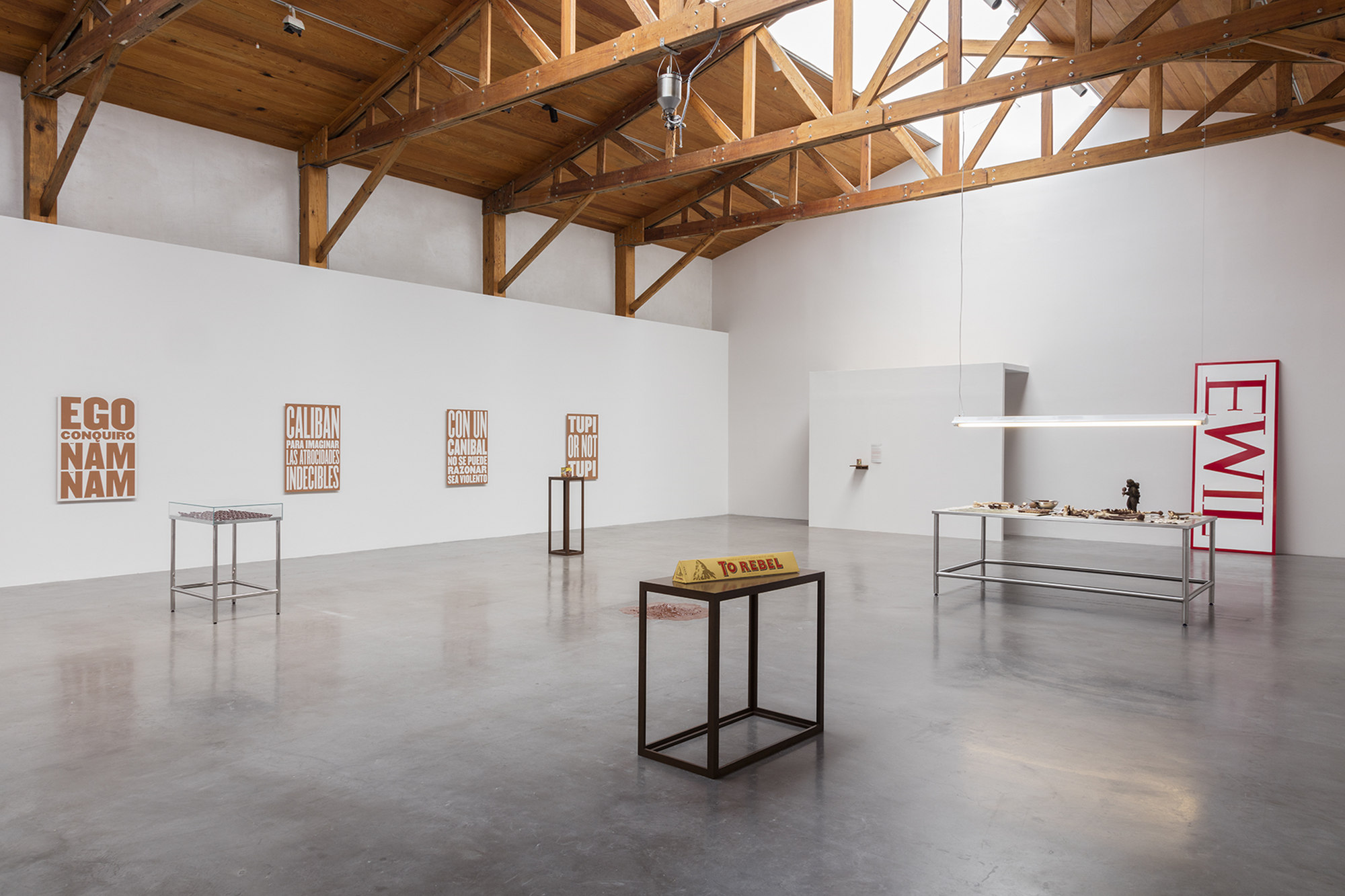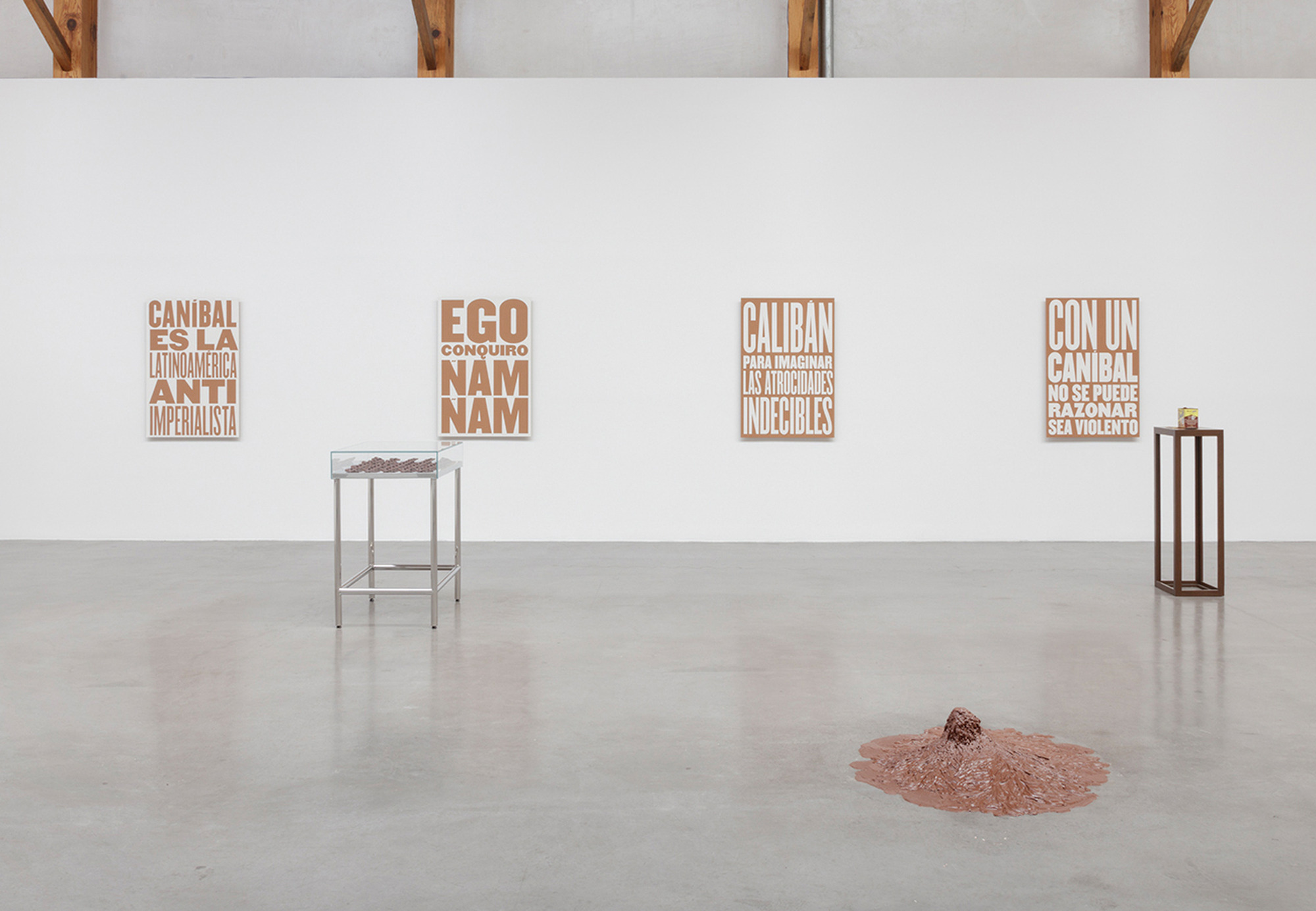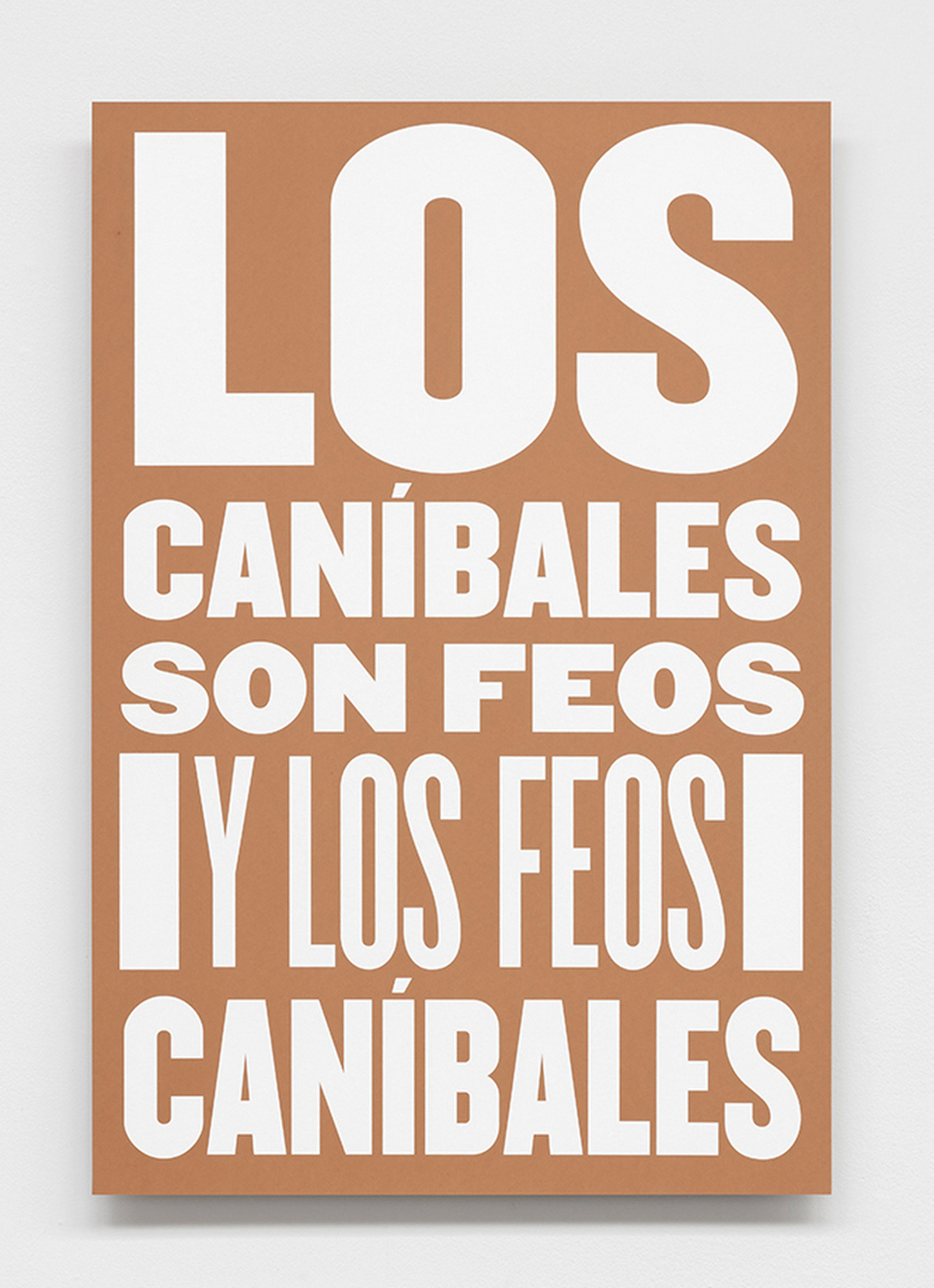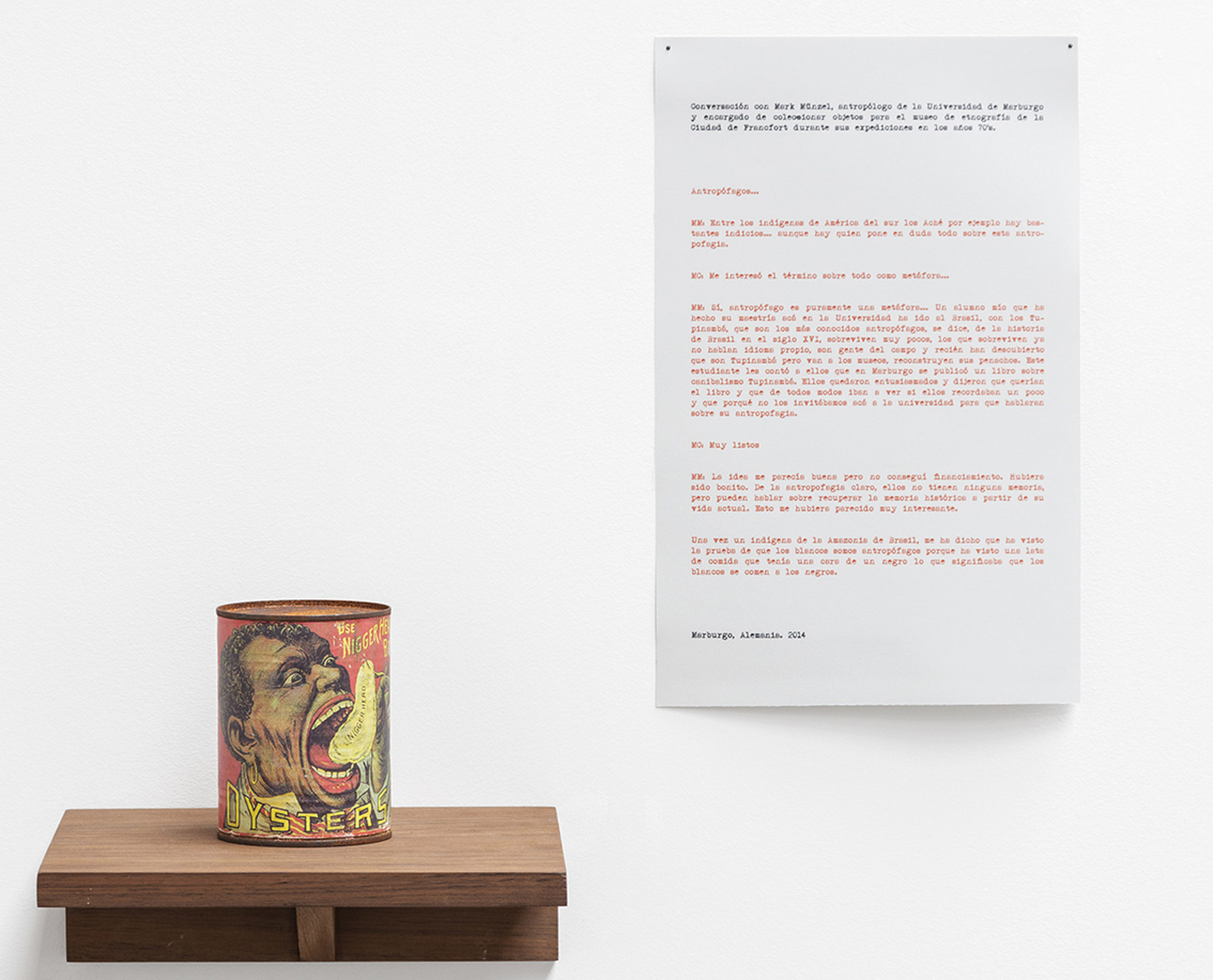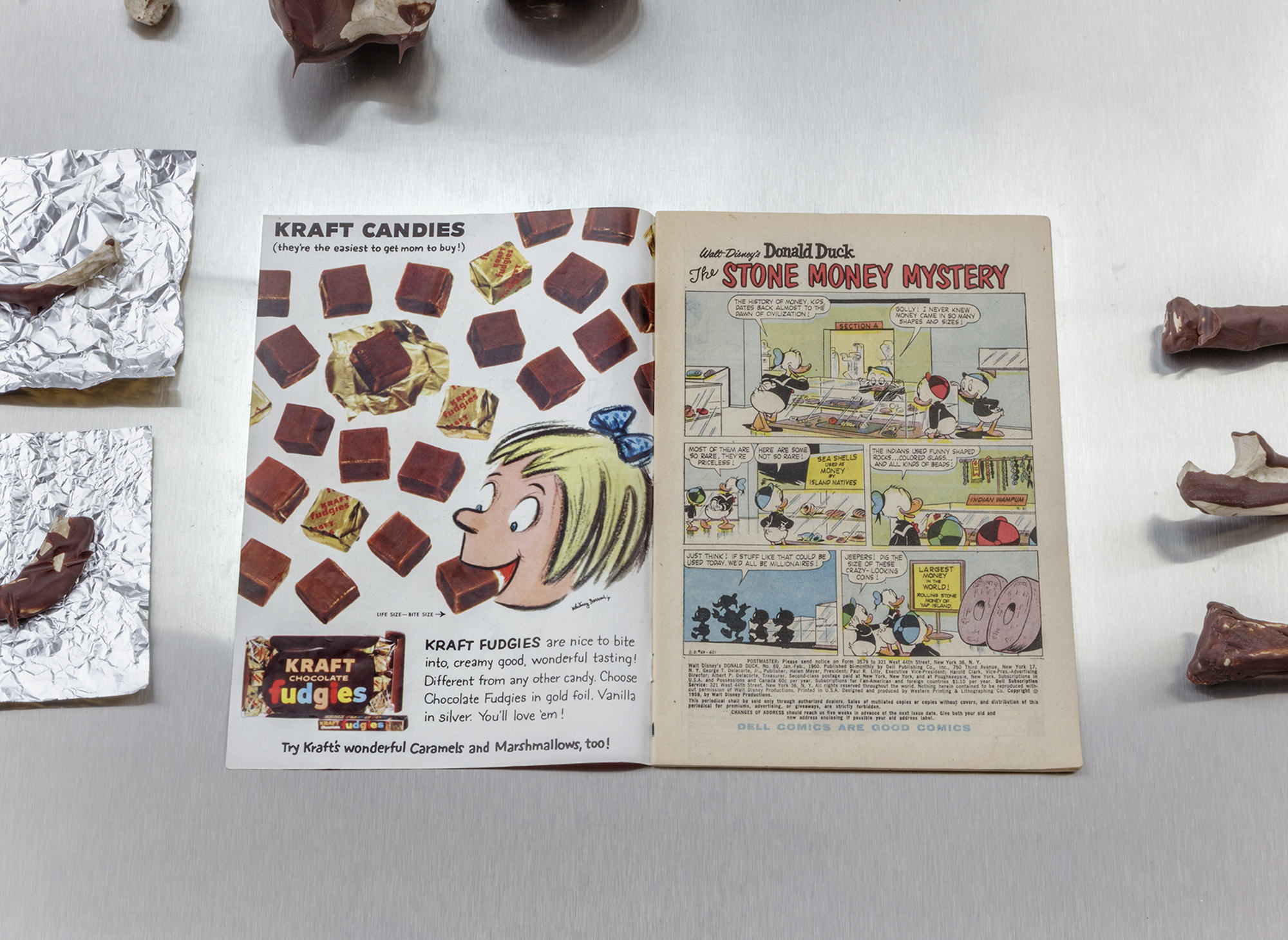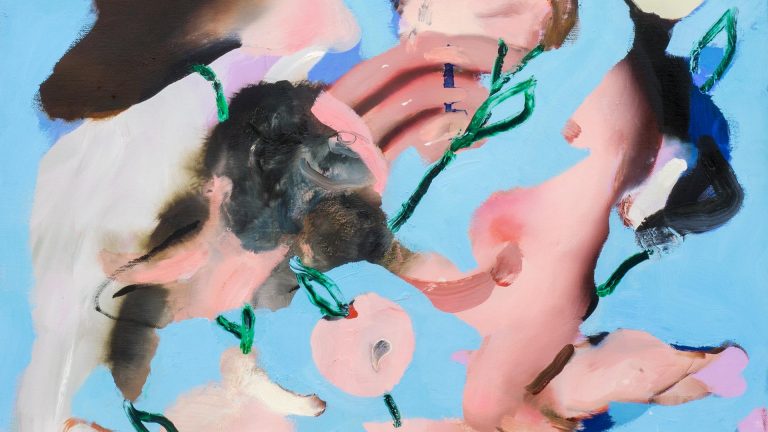Artist: Minerva Cuevas
Exhibition title: Feast and Famine
Venue: kurimanzutto, Mexico City
Date: September 22 – October 24, 2015
Photography: Omar Luis Olguin, images copyright and courtesy of the artist and kurimanzutto, Mexico City
Cannibalism is the only thing that unites us. Socially. Economically. Philosophically.
– Oswald de Andrade. Cannibalism Manifesto.
In a time of generalized indifference and skepticism, Minerva Cuevas’ (Mexico, 1975) projects are characterized by a critical investigation of social realities. Her work seeks to provoke reflection on established systems, employing irony and humor to analyze the power structures that underlie social and economic ties. In this exhibition, Cuevas uses cacao as a material to reveal the colonial processes inherent in global trade and commerce. Chocolate is used to transform and distort images of quotidian consumption in order to question the notions of value, exchange, and property that rule the capitalist economy.
The Feast and Famine exhibit had its beginnings in the study of the coin collection at the Museum of Ethnography in Frankfurt. From early inquiries into the use of cacao as currency in the pre-hispanic era, Cuevas began to investigate the cultivation of cacao in present-day Mexico, as well as the surrounding conflicts and commercial interests. The majority of the cacao produced in Mexico comes from the south, an area also notable for its oil production. As economic pressures continue to shape the human landscape of the region, agricultural workers are increasingly forced to abandon their fields and work in the hydrocarbon industry.
At the same time, Cuevas analyzes the term cannibal, and how it has been used throughout history. During the colonial era, the European perception of this phenomenon allowed the demonization of the revolting Indians and initiated the process of “civilizing” the inhabitants of the new world. Today, social cannibalism is reflected in the exploitative labor practices associated with contemporary consumption. The manner in which particular ethnographic objects and histories are acquired, appropriated, and “owned” by institutions and governments can be seen as a way of controlling and consuming the other, a cultural cannibalism being played out on the symbolic level.
Among the pieces produced for this exhibition are 500 chocolate ears, made especially from a crop of native cacao, Grano Real Xoconusco. Cultivated in the state of Chiapas, the majority of this cacao as well as the cacao produced in other parts of the country is exported for consumption across Europe. This piece functions as the nexus of various investigations that Cuevas has carried out in recent years. The ears reference the pre-hispanic practice of using the body as a unit of measurement, as well as early anthropological efforts to compare races and cultures by measuring and documenting the human body. The symbolism of the severed ear also recalls the methods of social repression, torture and control that have historically been used around the world.
Conceived as a playful essay, Feast and Famine is an interdisciplinary project combining different aspects of anthropology, product design and economics. The pieces in the show serve as tools to discuss the condition of the individual under the capitalist regime: the constant abuse, dispossession and estrangement from ancestral and cultural identity, as well as the latent possibility of revolt.


